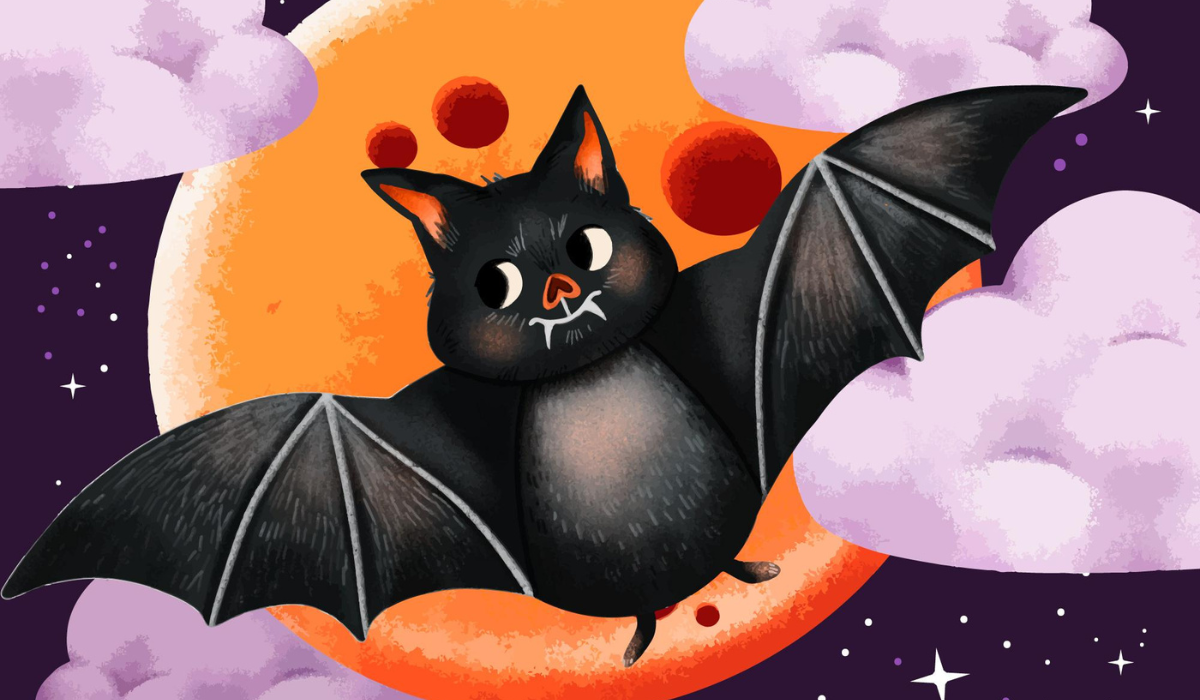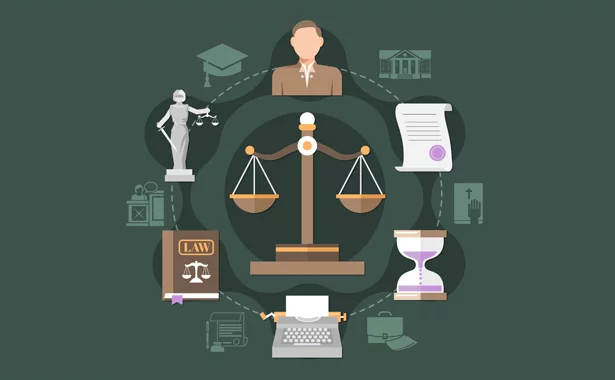Blog
Cute:-_Noi7qvbwi= Bats

Cute Bats Revealing the Hidden Lives of Nature’s Nighttime Marvels
Bats are often vilified and overlooked despite their critical role in our ecosystem. These intriguing night creatures are involved in different ecosystems, ranging from pollination to pest control. However, there is much more than meets the eye when it comes to bats. This article explores the magical world of these winged mammals by discussing their variety, behaviors and environmental importance.
An Overview of Bats Worldwide
Bats are among the most fascinating animals on earth because they fly at night and have such unique characteristics. There are over 1,400 species, which represent about 25% of all mammalian species. They live in all parts of the world except extreme polar regions and remote islands.
Contrary to popular belief, bats contribute greatly towards maintaining healthy ecosystems around the planet. They act as natural controllers for pests like insects; additionally they help with pollination as well as seed dispersal among plants necessary for forest regeneration. It is therefore important that we understand these interesting organisms so that we can conserve them together with their supporting environments.
Different Bat Species – A World Within Itself
Diversity within this family is amazing considering factors such as size variations or even physical appearances among other things like habitats preferred by different species etcetera . Starting from bumblebee bat which weighs less than one gram (it’s lighter than a penny) up to those giant flying foxes with six foot wingspans can be found here!
Bumblebee Bats
These tiny creatures weigh about two grams each and have a wingspan measuring approximately six inches across. The smallest known bat species is found in Thailand as well as Myanmar where they serve an important ecological function through acting both as insect controllers and pollinators.
Flying Foxes
Tropical regions around Asia , Australia , Africa together with Pacific Islands serve home ground for majority if not all fruitbats or megachiropterans which are commonly referred to as some large bats . With their ability to see well due having big eyes as compared other animals plus wider wingspans ranging between two meters to more than six meters long; these creatures become very significant agents of pollination besides being good seed dispersers for many tropical plants.
Honduran White Bat
The Honduran white bat is just one example out of several adorable species under the order Chiroptera commonly known as ‘bats’. It has got beautiful fur that looks fluffy because it’s all white colored apart from its nose and ears which appear bright orange in color. These bats live in Central America where they roost underneath large leaves by folding them into small tents thus creating a unique sheltering behavior among other interesting features associated with this particular kind of mammal.
Special Habits and Adaptations
Bats have evolved a number of interesting habits or adaptations that enable them survive within different environments. Some adaptations include exceptional echolocation skills while others may be related to particular dietary requirements as well as roosting needs etcetera .
Echolocation
One thing most people know about bats is their ability to use sound waves for seeing called echolocation. This system works by emitting high pitched sounds such that when they bounce back after hitting objects around, the bat can tell how far away an object is among other things like its shape or size etcetera . In essence, this helps these nocturnal mammals navigate through dark areas especially when hunting insects at night since it provides detailed information about what lies ahead based on reflected echoes received from those objects.
Unique Feeding Habits
Roosting Habits
Bats can roost in trees alone or dwell in large groups inside caves. The Brazilian free-tailed bat for example forms colonies with millions of members, this is one of the most amazing natural events on earth.
Bats as Natural Pest Controllers and Pollinators
The environment and human activities benefit a lot from the essential ecosystem services provided by bats. These mammals act as natural pest controllers and also help in pollination thus contributing towards the health and productivity of various ecosystems.
Pest Control
Insectivorous bats are known to be very good hunters because they eat a lot of insects every night. Most agricultural pests are taken care of by these animals which means farmers do not have to use chemicals that often so as to kill them.
Pollination and Seed Dispersal
Many plants especially those found in tropical regions rely heavily on bat species for pollination. Bananas, mangoes and agave (the plant used in making tequila) are just but few examples of economically important crops that depend entirely on bats for pollination. Additionally, fruit-eating bats play a big role when it comes to forest regeneration through seed dispersal hence promoting biodiversity too.
Debunking Myths and Misconceptions
There are many myths surrounding bats which if not clarified may affect their conservation status as well as that of ecosystems they inhabit.
Bats and Disease
It is common among people to think that all kinds of diseases are associated with dirtiness; therefore this misconception has lead people into believing that these creatures carry diseases such as rabies which is not true since there has been no recorded case worldwide where any human being got infected by rabies only through contact with bat droppings or urine. However, precautions should be taken like avoiding direct contact with them unless trained how do it properly.
Bats and Vampirism
Furthermore another popular fallacy about this animal concerns its feeding habits; some people believe that bats suck blood from animals including humans but actually only three out of over one thousand four hundred species feed on blood and even those which do prefer livestock rather than people. In addition to this, although vampires have evolved special mechanisms enabling them obtain maximum nutrition value when feeding on blood their contribution towards total population size remains insignificant.
Bats as Pests
Most individuals consider roosting buildings or homes by these creatures undesirable since they are perceived to be nuisance. Nevertheless they rarely cause harm so long as there is no direct contact established between human beings and them. The most important thing is ensuring safe removal of bats from any given structure without causing any harm because it helps in ecological balance maintenance.
Supporting Bat Populations and Habitats
It is crucial to conserve bats together with their respective environments if we want our ecosystem remain healthy always. People can support bat populations through various ways.
Creating Bat-Friendly Gardens
One way involves planting flowers that originate from where one lives so as to attract insects which form part of bats’ diet. Moreover, construction houses for these mammalians may also serve as good roosts thereby supporting local bat communities too.
Reducing Pesticide Use
Chemical pesticides should be applied minimally considering impact on insect populations relied upon by bats for food provision. Integrated pest management along side organic gardening methods creates safer habitats not only for these nocturnal fliers but also other forms wildlife life.
Participating in Citizen Science
Researchers and conservationists alike find citizen science programs very useful during monitoring different species including roost surveys among others related with bats. Such activities help promote public awareness concerning importance of conserving natural resources like forests where many types of animals depend on each other for survival hence contributing more towards protecting such valuable creatures like birds.
The Importance of Bats
In order for us humans thrive well there need be balance within ecosystems thus making every living organism significant in one way or another towards this achievement. Interestingly enough, bats are even more valuable than most people think because without them;
Understanding and valuing bats can help protect them and their homes. We can do this by making environments suitable for bats, minimizing the use of pesticides and taking part in community-based research among other things.
Conclusion
Bats are not just night furies; they are part of our ecosystem that ensures natural balance of things. It is important to debunk all myths about them so as to increase their love hence protecting them together with their habitats.
If you want to know more about bats or how you can contribute towards their well-being then get involved with local conservation groups or attend events related to these fascinating creatures. Let us work hand in hand for a better world for bats because without us they cannot survive.
Blog
RS 149 Bear Jumpsuit – Adorable & Practical Babywear

When it comes to dressing your little one, comfort meets cuteness with the RS 149 Bear Design Long-Sleeve Baby Jumpsuit from The Spark Shop. Parents often find themselves stuck between an array of baby clothing options, but what stands out more than soft, stylish, and practical wear combined?
If you’re looking for a piece that combines adorable aesthetics with practical functionality, then this jumpsuit is going to be your new favorite. And guess what? It’s not just about the looks—it’s about ensuring your child stays comfortable throughout the day.
But why is this jumpsuit so special? Stick around, because I’m about to unpack all the reasons why this product could be your answer for style and ease in your little one’s wardrobe.
Key Takeaways
- “Bear Design” for added cuteness blended with a versatile look for every occasion.
- Soft, breathable fabric ensures your baby’s comfort all day.
- Perfect for every season due to its long-sleeve design.
- Easy care, durable material—because we know parenting is already enough work!
If finding a stylish yet simple-to-maintain outfit sounds like a dream, this jumpsuit checks all your boxes!
Product Features
When buying clothes for your baby, there are plenty of things to consider—skin sensitivity, durability, and of course, cuteness! The RS 149 Bear Design Jumpsuit delivers on all fronts.

Key Features Include
- Adorable Bear Motif: The cute bear design adds a playful charm, making this jumpsuit photo-ready for your baby’s milestones or everyday moments.
- Premium Fabric: Made from high-quality cotton to keep your baby snug while preventing any skin irritations.
- Easy Snap Closures: No stress during diaper changes—these easy snap buttons make your life so much easier!
- Durable Design: Built to last wash after wash while maintaining its softness and adorable look.
Imagine this jumpsuit becoming your little one’s go-to outfit for family outings, or a snuggly companion for those cozy at-home days.
Expert Insight: “For baby wear, it’s all about finding breathable fabric and avoiding harsh materials. Cotton is always my go-to for sensitive skin,” says pediatric fashion consultant Dr. Ananya Kapoor.
Size and Fit
Because babies grow faster than we can blink, getting the right fit is crucial!
Here’s a handy size chart to make your shopping easier:
| Size | Age Range | Height (cm) | Weight (kg) |
|---|---|---|---|
| 0-3 M | 0-3 Months | 50-60 | 3-5 |
| 3-6 M | 3-6 Months | 60-70 | 5-7 |
| 6-12 M | 6-12 Months | 70-80 | 7-9 |
| 12-18 M | 12-18 Months | 80-90 | 9-11 |
Pro tip? Always opt for a slightly larger size to give your baby room to grow and ensure longer usability.
Care and Maintenance
Raising a child comes with endless chores, and the last thing you want is a high-maintenance outfit. That’s why this jumpsuit is designed with simplicity in mind.
Here’s how to care for it:
- Wash on a gentle cycle using baby-friendly detergent.
- Air dry to ensure longevity, though it’s dryer-safe on low heat.
- Avoid using harsh bleach or chemicals that could irritate your baby’s skin.
With these easy care instructions, you can trust that the jumpsuit will look and feel as good as new for months to come.
Customer Tip: “I’ve washed it so many times, and it’s still as soft and adorable as day one!” — Meera, Chennai
Customer Service and Support
At The Spark Shop, we pride ourselves on making your shopping experience smooth and enjoyable. Whether you have questions about sizing, delivery, or care tips, our dedicated team is here to help.
Reach us via:
- Email: support@thesparkshop.in
- Chat: Available 24/7 on our website.
Have concerns or feedback? We’d love to hear from you—we’re always listening to make your experience better.
FAQs
1. Does the jumpsuit come in other colors or designs?
Yes, we offer a range of colors and animal-themed designs. Be sure to check our catalog for the latest collection.
2. Is this jumpsuit suitable for cold weather?
Absolutely! Thanks to its long sleeves and soft fabric, it’s perfect for layering on chilly days.
3. Is the material suitable for sensitive skin?
Yes, the cotton fabric is gentle and hypoallergenic, perfect for your baby’s delicate skin.
4. What’s the return policy?
We offer a hassle-free 30-day return policy if you’re not satisfied with the product.
5. How quickly will I receive my order?
Orders within India typically arrive within 3-5 business days.
Need more info? Drop us an email, and we’ll make sure to resolve all your concerns.
Make Parenting Easier While Dressing in Style
Parenting comes with more decisions than you could’ve imagined, but dressing your baby shouldn’t be complicated. The RS 149 Bear Design Long-Sleeve Baby Jumpsuit is the ideal blend of practicality and cuteness for modern parents.
Whether it’s their first playdate or naptime at home, this jumpsuit ensures your baby stays stylish and comfortable. But don’t just take our word for it—experience the convenience and charm for yourself!
Blog
E-Waste Crisis: The Gadgets We Toss and Their Impact on Our World

Did you know millions of old phones, computers and other electronics are thrown away every year? It’s a huge environmental problem. This growing issue is called e-waste or electronic waste.
Every time we throw away an old gadget, we’re adding to a problem that affects our planet, our health and the people who have to deal with all that trash.
But what exactly is e-waste and why is it so bad?
Let’s get into it.
What is E-Waste?
E-waste is all the electronics we get rid of; imagine every time someone upgrades their phone or computer – their old device ends up in the trash.
But e-waste isn’t just about our old phones and computers; it’s TVs, washing machines and even some toys.
As technology gets cheaper and better, people keep upgrading and creating a lot of e-waste. The problem is – these devices aren’t always disposed of properly and that’s causing some big environmental problems.
How Much E-Waste Do We Create?
In 2022, we produced about 62 million tons of e-waste – to put that in perspective, that’s 1,000 laptops per second! And only 20% of that waste is recycled properly.
The rest ends up in landfills, dumps, or gets burned and releases harmful chemicals into the air, soil and water.
- Europe: 16.2 kg per person per year.
- United States: 13.3 kg per person.
- Africa: They generate less but receive e-waste from other countries and it affects their environment.
Why is E-Waste Bad?
Electronics contain chemicals and metals that don’t belong in the ground or our waterways. When e-waste sits in landfills or gets burned, these toxic substances leak out, including lead, mercury and cadmium.
These are harmful to humans and animals; when humans are exposed to these chemicals, it can cause serious health problems, lung problems, cancer and developmental issues in children.
People in developing countries where most of the world’s e-waste is dumped are especially vulnerable.
They often work with no protective gear to break down old devices. This exposes them to harmful substances that can cause long term health problems.
What Can We Do to Reduce E-Waste?
To solve the e-waste crisis, we all need to change how we buy, use and dispose of electronics.
Here’s what we can do:
- Think before you buy: Do you really need the latest device? If your current gadget still works, keep using it a little longer.
- Repair, don’t replace: Fixing a broken screen or replacing a battery is often cheaper (and at least more environmentally friendly) than buying new – and it reduces waste.
- Recycle: Many stores have recycling programs, where you can drop off old devices.
- Donate or sell: If it still works, donate or sell it. Someone might need it!
Are Companies Helping Out?
Some companies are trying to reduce e-waste – Apple has recycling programs and Samsung has repair options.
But not all are as committed.
Many still push customers to upgrade every year and increase e-waste. So, support brands that repair and recycle!
And remember when selling or donating old devices to use a VPN (Virtual Private Network) like Surfshark to protect your data from hackers when online.
What’s the Future of E-Waste?
Experts say e-waste will continue to grow as we buy more gadgets.
But if we recycle more and companies make gadgets last longer, we can slow down the growth of e-waste.
Another big trend is the “right to repair” movement, which demands companies make it easier for us to fix our devices instead of replacing them.
Personal Choices: What Can You Do?
You don’t even have to be an adult or someone of financial means to make a difference with e-waste. Here’s how you can help:
- Limit upgrades: If your current device works fine, don’t upgrade yet!
- Educate others: Share this with friends and family.
- Choose eco-friendly brands: Support brands that repair and recycle.
- Get creative with old gadgets: Instead of throwing away an old phone, use it as an alarm clock, music player, or even a home security camera.
Conclusion
While e-waste is a big problem, there’s a solution.
By making smarter choices on the gadgets we buy and how we dispose of them, we can reduce the impact of e-waste to the planet.
Companies, governments and individuals all have a role to play.
Next time you think of buying a new device, remember every gadget you don’t throw away makes a difference.
Blog
Decoding the Mystery of q.d.c. The Secret Language of Old English Abbreviations

Are you intrigued by the prospect of tracing the history of an abounded manuscript or ancient text? If so, you are in for an intriguing exploration! Today, we are going to talk about ‘q.d.c’ also known as ‘querit declamation antiquorum’ which is an old English abbreviation used to this very day. For centuries, this abbreviation has been used, from the gothic manuscripts to the present day in various disciplines.
In this post, we will learn the history of ‘q.d.c’, its impact, and changes made to it. You will further learn why this abbreviation is important in today’s world, across various fields including healthcare and, legal matters. Finally, you will appreciate why ‘q.d.c’ is relevant to one’s interests in history, linguistics, or even search engine optimisation.
Let us begin with the root and meaning of q.d.c.
The term q. d. c which means resume or rest should really this with level of assistance a huge level of organisation almost 60% of the globe is yet to be reached. As mentioned above the Ancient English meaning community is majorly used for legal or educational texts. But what does it exactly stand for?
Building it step by step.
Q.d.c comprises of few letters and all carry significance. ‘Quod demonstrandum cepit’ is quite concisely demonstrated with this abbreviation; which when literally translated depicts ‘what was begun to be demonstrated’. Its summarising aspect emphasised commencing outlines placed at all separated points in the text. Although, notes like this were mainly utilized by scholars and clergymen, they were able to construct tremendous texts in a brief manner eliminating busy work.
The Role of q.d.c. in Manuscripts
In the medieval period, when the manuscripts were to be produced in a greater number, monks would take the work of copying them in the scriptoria even by hand. Scribes and copyists would have to work harder and use short hand to abbreviate words in order to use less parchment or vellum only the most pertinent information would be carved for mass drafting of the manuscripts. These pithy statements would serve as useful memory triggers in religious, philosophical, or even legal texts.
An Ancient Tool for Modern Readers
Despite being perceived as an archaic phrase, ‘q.d.c.’ is worthwhile to take our time to process, as it will only help better in interpreting specific historical documents. Through these tools, one can appreciate how societies of the past were brainy in their quest to compile as well as disseminate information.
Historical Significance and Evolution
Not only does the abbreviation q.d.c. is interesting only from a linguistic viewpoint, but it has a lot to share about the evolution and development of language along with modes of communication during the bygone times.
A Glimpse into the Past
The oldest branch of the modern English language with which people interact today, Old English, was full of abbreviations. Such shorthands would come in handy to cope with complex spheres, especially due to the fact that the bulk of copying was done by hand. The Q D C would be an ideal demonstration of how people and scholars expressed their thoughts in summary fashions while still ensuring that their ideas or thoughts were understood easily.
Transformations Over Time
Of course, as time progressed and languages transformed the other additional forms of languages, such as use of abbreviations started gaining roots. An English phrase, “q.d.c.” found itself from Old English, latinated, with the funny noticeably purposive addition of Read Latin This was turning point as the term perception inherited the culturally profound time periods around it.
Connecting Time Periods
Analyzing materials like “q.d.c.” allows researchers to relate with the past intelligentsia of civilizations, as this and similar lines were used through out history the underlying motives of research and communication have been inherited one way or another.
Using q.d.c. in Today’s World
Even though they may have a historical origin, “q.d.c.” finds application in multiple arenas of our modern day society.
Medicine and Science
Precision is key in medicine, there are absolute amendments which require absolute clarity wording, alongside which the scientific literature would include “q.d.c.” these stand to forward. write summative statements of…… or these are the conclusions which need to be drawn. Over time these words that speak in vagueness will help professionals deal with much more complex papers and studies than these.
Literature and Academic Writing
In academic papers, there is no sun for writers and it’s more about cutting words while keeping the fact delivered. Hence why writers may want to do that and say “q.d.c.” and use it for conclusions and some points of an argument. Giving out terror abolition can make the reader understand and appreciate literature, or scholarly works for the matter.
Standardization of Processes Regarding Disputes
Perhaps the most notable requirement, when creating legal papers or formal contracts, is attention to the details – Elaine, Wai and Young 1998. Indeed, such legal forms transcribe a multitude of arguments and conclusions. Knowing such shorthand forms is useful to both the legal professionals and the ordinary legal text readers as it helps to understand legal documents better.
Conclusion
The abbreviation ‘q.d.c.’ as a term, is rich in history. From its early usage on Old English manuscripts up to present-day usage, this abbreviation epitomizes the effectiveness of a straightforward approach to any task. There is much to be gained by knowing ‘q.d.c.’ especially in our interface with history as well as in the quest of diverse areas in the contemporary World.
-

 Technology4 months ago
Technology4 months agoTeknologian ja Kulinaaristen Uudistusten Yhteys
-

 Business6 months ago
Business6 months agoA Deep Dive into Toto Sites: Unlocking New Online Experiences
-

 Business6 months ago
Business6 months agoCollection of links: a modern solution for streamlining legal information access
-

 Blog2 months ago
Blog2 months agoRS 149 Bear Jumpsuit – Adorable & Practical Babywear
-

 Technology4 months ago
Technology4 months agoDie Zukunft der gastronomischen Innovation: N2O-Produkte und ihre Rolle in modernen Küchen
-

 Technology4 months ago
Technology4 months agoWhich Are The Best Smartphone Security Apps?
-

 Blog8 months ago
Blog8 months agowallpaper:ek_xjuauh0q= preppy
-

 Technology4 months ago
Technology4 months agoWonderfox HD Video Converter Factory Pro: Make MPEG to MP3 Conversion Easier


